The Jefferson District
The Jefferson District
by Leslie Mendoza & Zui Krumroy
Overview
Ogden, Utah is an anomaly within Utah. Once a small LDS town, the continental railroad brought people of color to Ogden, diversifying the area in the late 1800s to the early 1900s. It is often revered as the “bad part of Utah” and is associated with vice, sin, and violence. The Ogden Union Station was built in 1869 encouraging economical, political, social, and cultural development. Because the railroads required intensive work, people serving riders, etc. black people came to Utah to be “red caps.” Red caps were attendants serving those riding the trains. Many black people settled in Utah, specifically the Jefferson area since this area was segregated for the black population. According to the US Census Bureau, Ogden has a total population of 87,321 people, of that, 30.8% is Hispanic or Latino, 2.01% is Black, and the majority of Ogden is White non-Hispanic.
The Jefferson District contains the areas South of 25th street from 25th street to 36th street and between Wall Avenue and Washington Boulevard. The district runs along the railyard where some rails continue to be used. The neighborhoods are filled with old-style homes- many of which are in need of maintenance while others are entirely boarded up. Business here was full of car/auto repair shops, small family-owned food businesses as well as large factories like the dog food production company.
Visuals
The Ogden Union Station sits at the end of 25th street and has become a staple of the city. Originally built in 1869, the station was one of the main reasons for the development of downtown Ogden. With the usage of rails beginning to grow, this structure became an important and useful aspect in the lives of this once-small Mormon town. After a fire in 1923 destroyed the building completely, it was later rebuilt and re-designed by 1924. The photos above illustrate the Union Depot and the New Station following the fire. The usage of railroads and its expansion created many jobs, most of which were occupied by Chinese immigrants under a contract granted by Brigham Young who was president of the LDS church at the time (Utah State Railroad Museum). Located right by 25th street, Union Station has become a sacred structure for the locals and tourists that explore Ogden. The buzzing of people and accessibility to a community with walkability is quite the opposite experience for the street just a few miles south near the railyard.
Compared to its surroundings, Jefferson is rundown and underwhelmed with old buildings, factories, and homes with little to no effort made to bring life into the community. While driving around Jefferson, it was apparent that the homes and architecture and design were significantly older than their neighboring districts. Splintering paint, once livable homes now have their windows boarded, falling wire fences, and overall deterioration. Homes were also painted bright, loud blues, aquas, or greens, a very late 1900’s theme which asserts that these homes haven’t been renovated or redone in many many years. The falling chain link/wire fences were also rusted and fences made of wood were in even worse condition since they were discolored, growing mold, and overall unaesthetic.
Also, home to Jefferson is large factories such as the dog food production factory and a grain factory. The roads leading up and around them are underdeveloped and littered with potholes and bumpy, gravel roads. While tucked away into the district and away from most street traffic, you can still smell the dog food factory from blocks away. It’s quite unpleasant and certainly isn’t something most people would want to be living near.
Jefferson’s Sacred Structures
When it was first built in 1869, residents could not imagine the impact Ogden’s Union Station would have on its community. Proposed by Brigham Young that the area of land would be used for railroad purposes. Union Station became a sacred structure for Ogden and had an important role in the development, expansion, and economic development of the city. Hester brings up ideas on how and what makes a structure sacred (Hester, 15). For Ogden, even though the railroad is no longer in use as a mode of transporting people. It was once a building that influenced the everyday lives and patterns of the community. Though it was at one point essential in its use, it’s now a sacred structure in the sense of its symbolism that the community identifies with their city. Union Station has adapted and become a museum to remind both residents and outsiders of the importance it had on Ogden and the state of Utah in general through what Hester would call “historic tourism,” (Hester 13). It attracts people to learn about the history and symbolism of the station by providing a sense of community. The place is synonymous with concepts that the residents could have of the town and if it were to be removed there would be an impact on the community. Through the years it has continued to be a staple in the community and is at the heart of downtown Ogden.
Essential to the history of housing segregation and discrimination in Ogden is The Royal hotel, one of the only hotels that allowed black people to stay in at the time still stands today. The Royal Hotel on 2522 Wall Avenue. This historic landmark was originally opened in 1914 and was available to those traveling on the railroad and its workers. After being sold in 1935, the hotel became one of two options that African Americans could stay at while they passed through Ogden, creating a safe haven for workers since otherwise, they were unlikely to find someplace to stay (Utah Division of State History). While registered nationally for historical buildings, the Royal Place isn’t immune to racism, lack of development, and deterioration. When compared to Union Station, The Royal Hotel does not have the appeal of a sacred structure; we see that the paint is chipping along the windows, there’s little to no signage signifying the importance of this sacred structure, and it overall gives off an eerie feeling even if located right in front of Union Station. Hester suggests that our cultural preoccupation with placelessness and topophilia shows that we value some places over others, (Hester 15). Given the historical context, it’s possible that though residents value what Union station did to build the city, The Royal Hotel is a reminder that it was at the cost of discrimination and the exploitation of the labor of minorities.
Housing and Income Stratification in Jefferson
The United States' deep-rooted history of racism and discrimination has carried on since the abolition of slavery. In order to preserve the white people’s superiority and power over black people, housing discrimination and income suppression took place in practices such as redlining, exclusionary economic zoning, and federal government policies and regulations. Rothstein dives into these practices in Own Your Own Home and Suppressed Incomes. Black people were immediately at a disadvantage after the abolition of slavery and even more so economically when the government implemented policies and often taxed black people at higher rates resulting in black families having fewer opportunities to accumulate wealth (Rothstein 154). We also continue to see disparities in paychecks between black and white people. The US Department of Labor reports that in Utah, a Black people make $.75 to the $1.00 a white person makes. Being unable to have greater amounts of disposable income, black people are often forced to continue living in conditions many people would refuse. This situation becomes even more desperate since the homes and areas black people were subjugated to live in were in need of greater care and maintenance. This resulted in homes deteriorating because their incomes weren’t enough to pay for maintenance and provide necessities for themselves and their families.
Rothstein recalls how the Federal Housing Administration, FHA, “judges that properties would probably be too risky for insurance if they were in racially mixed neighborhoods or even in white neighborhoods near black ones that might possibly integrate in the future,” (65). Ogden’s segregation resulted in Black people being unable to find places to stay while visiting, with the now Jefferson district being the only option. The district is outlined in the redlined map of Ogden in 1931 in areas D1, D9, and D2. Hazel Jones, a wife of a dining Car Chef Cook remembers “we could only rent or buy homes between Wall Avenue and Lincoln Avenue, from 22nd street to 30th street,” (Utah State Railroad Museum). As previously mentioned, The Royal Hotel still exists in Ogden and is a sacred structure but is heavily ignored due to racial ties and its location. Since it hasn’t been invested in and marketed to the same extent as places directly on 25th street, its property value likely remains low or the same as it was and is an example of how Black people and places for people of color aren’t able to build wealth from their properties which also is the consequence of restricted living spaces.
The Street People and Uses of Sidewalks or Lack Thereof in Jefferson
With the decrepit aesthetic of Jefferson, when driving around the area, there were little to no people walking around. The only people who were out were homeless people waiting for the bus, by the local homeless shelter, or people sleeping/resting on the sides of roads. This builds a negative perception for both insiders and outsiders. Jacob asserts that for a city street to feel safe and give the perception of safety there must be obvious lines of public vs. private spaces, there must be eyes watching the street to protect people from crime, and finally, there must be traffic on the street so people can entertain themselves (35). Jefferson barely meets the first requirement since some areas are clear where it’s public and private, and other spaces are not so clear. Whyte states “there is plenty of sin, in short, but not so much danger. Perceptions, however, are otherwise. In many cities the perception of crime in the center is considerably greater than actuality,” (54). This perception of Jefferson as being high in crime is associated with the types of people out on the street, coupled with Jacobs's theory that empty sidewalks assert that the area then must not be safe to be on. With trash and homeless people out instead of more “reliable” people like vendors or entertainers out, people aren’t going to feel safe like Jacobs suggests when streets are busy. There are few eyes on the street and there aren’t many vendors, entertainers, policemen, traffic directors, or anyone of any authority that Whyte suggests make a city a city. Whyte argues that street people give life and a certain vibe to a city, and in association with Jacobs, street people are also those who provide a sense of comfort and safety for strangers and people passing by when out on the sidewalks. But because the only incentive to go out is the Lantern House, the local homeless shelter located on 33rd street between the Railyard and Wall Ave, it’s only homeless people out using the sidewalks. If strangers passing by only see homelessness as well as litter, it’s easy and logical to perceive that place to be dirty, undeserving of being taken care of and managed, and likely unsafe and dangerous. This helps explain the perceptions of Ogden explained in the following section.
The Iconic Ghetto and Immigrant Perceptions of Place
As the expansion of the city grew, many rich and often white people began expanding out towards the North and even East of Ogden. This began the division between what locals and outsiders consider good and bad parts of the city, with Jefferson falling into the bad category. The term ghetto has become synonymous with poverty and crime (Anderson, 10). The neighborhood of Jefferson occupies a majority-minority-filled community. The roads are rough and there are no grocery stores easily accessible. Even with a walkability score of 68, there are not many beneficial businesses to the community such as grocery stores near to walk to, the closest store is Dollar Tree and Dollar General right next to each other. Being only a street across from a dog food factory and a few homeless shelters, Jefferson is often referred to as the bad part of Ogden. It’s an area with old run-down homes and wired fences and as areas become increasingly impoverished Anderson points out that it also becomes more socially isolated often due to the structural changes in the economy that limits the availability of high-wage, low-skilled industrial jobs (Anderson, 13). Social isolation can affect a person's quality of life and create further divisions within these communities. As talked about in Dr. Glass’ chapter on immigrants' perception of race, once integrated into the wider community, the more they will assimilate and learn about the cultural codes of the United States which include fearing places where minority populations live, (Glass 91). Thus dividing themselves from those who look like them and perceiving them as threats to their neighborhoods.
Anderson argues that these perceptions people make about minorities are rooted in stereotypes because of the long history and the adaptability of these ideas. He states, “outsiders typically have little real familiarity with ordinary black men and women who conduct their lives primarily within their ghetto communities. But the full weight of the ghetto stereotype falls on any black person appearing in public,” (Anderson 16). Therefore, such stereotypes threaten the status of these communities and encourage society to categorize minorities as “others” further isolating them. When low-income areas with a minority-majority population get labeled as ghetto, the label and the stigma associated follows the residents in other aspects of their lives such as jobs in universities, corporations, and medical practice like a shadow (Anderson 20). The concept of The Iconic Ghetto persists in areas that house Black individuals as well as other minorities and it is seen in how outsiders view the area of Jefferson and all of West Ogden in general.
The perception of an area is determined by many aspects such as race and class as well as those that occupy the space as opposed to outsiders. Yet it is the influence of outsiders that often pushes the perception we have about a place, such as Jefferson, while the residents who occupy the area are unaware of it Dr. Glass states, “What residents living in majority white and middle-class areas of town see as trashy and seedy, or gaudy and ostentatious, can be perfectly acceptable and even celebrated in lower class minority neighborhoods.” (Glass 77) Jefferson is perceived in a negative light because of where it is located as well as the areas and structures that surround it. But the biggest factor seems to be the people that occupy the area seeing as Jefferson is a historically Black community. Currently, this area is mostly occupied by minorities though the exact numbers are hard to come by, it can be assumed that there is a large population of Latinx and Black individuals due to the businesses that are around the area. The text states that businesses serve the specialty tastes of its residents, “there is a clear divide between Mexican restaurants that cater to native residents and relatively new businesses catering to immigrants,” (Glass 81). Dr. Glass goes on to say that this is most noted in what kind of ingredients and dishes the restaurant serves. Such as when a business serves soft warm tortillas and dishes like Menudo as opposed to tomato-based salsas and hard deep-fried tortillas (81). A good example that is seen in the neighborhood of Jefferson, is located right in front of Jefferson Park where there is a small locally owned Mexican restaurant.
Chila’s Tacos is a woman-owned and operated business serving authentic Mexican food such as tortas, sopes, and soft tortilla tacos. The small restaurant is located in between homes and has a comfortable environment with a bright interior and Spanish music playing as you dine in. After enjoying some food, we spoke to the owner and asked her about the area. She has been open for eight years now and her hours are from 10-6pm most days except Sundays when they close at 3pm. When asked about what kind of people she sees come in the most, she states that there is a mix but she does see mostly Latinx people. In regard to the area, we asked her if she thinks this space is good for her business to which she responded by saying that where there is good food people will come but her biggest concern is her safety. She often wishes to stay open later but because of the growing homeless population she has seen over the years and the people that hang around the park she worries for the safety of herself and her employees because they are all women. Her responses are very similar to what Dr. Glass talks about in his chapter on immigrant perceptions of place, she did not speak about the area through a morally tinted lens nor did she use any terms such as “ghetto” or “sketchy” rather she described how the area made her feel.
It isn’t uncommon for residents to be aware of the status that their neighborhood has and the residents that live in these areas often adapt to it. The text talks about how immigrants are more even-handed with their assessments of the city stating both negative and positive aspects of the area while also being almost unimpressed with the perception of their neighborhood (Glass 89). There seems to be no need to divide the area between good and bad as there is for residents who live outside the area. Dr. Glass brings up a possible explanation for the perceptions of Jefferson which involves socialization (90). Because people in the United States have a tendency to associate areas in which people of color live with crime and other problems compared to other countries. Immigrants do not develop this way of evaluating places and do not see others as threatening if they are of similar race/ethnicity. Rather it is this similarity that brings comfort in a foreign area (Glass 91). Given this information, it’s possible that these businesses are built in neighborhoods and thrive within a community because it’s an area where they can all gather together and feel a sense of belonging and safety.
References
U.S. Census Bureau. (n.d.). Explore Census Data. https://data.census.gov/table?q=demographics+in+ogden+utah+raceEarnings Disparities by Race and Ethnicity. (n.d.). U.S. Department of Labor. https://www.dol.gov/agencies/ofccp/about/data/earnings/race-and-ethnicityOgden’s “Grand Hotel”—the Bigelow—Preserves a Historic Area. (2016, May 10). History to Go. https://historytogo.utah.gov/ogdens-grand-hotel-bigelow/Jefferson neighborhood in Ogden. (n.d.).Walk Score. https://www.walkscore.com/UT/Ogden/JeffersonThe Ogden Union Station. (n.d.). Intermountain Histories. https://www.intermountainhistories.org/items/show/239 Union Station; Ogden, Utah. (n.d.). https://www.booked.net/theunionstation
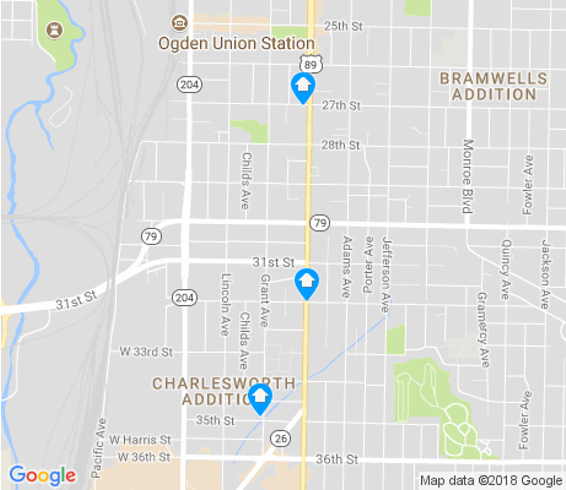


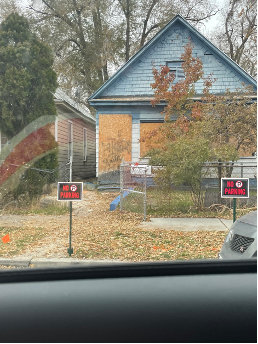





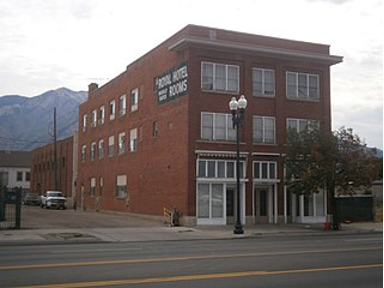




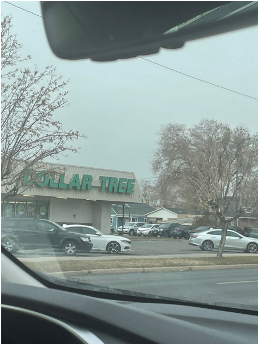
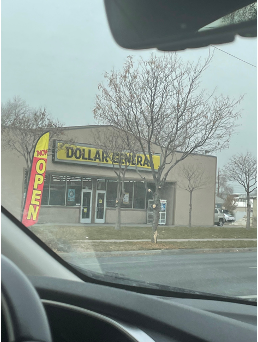




Comments
Post a Comment